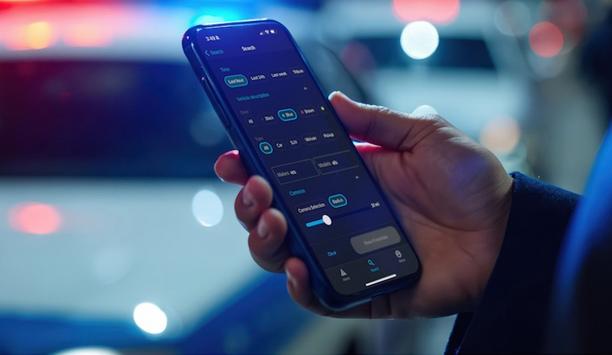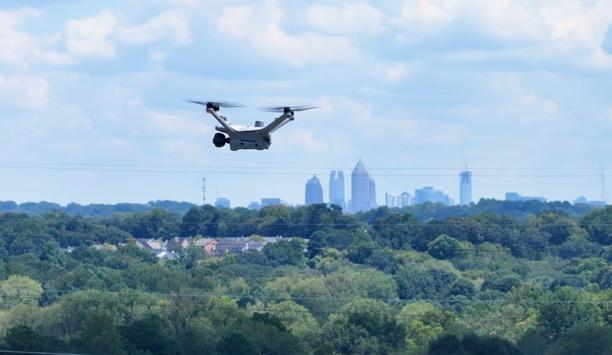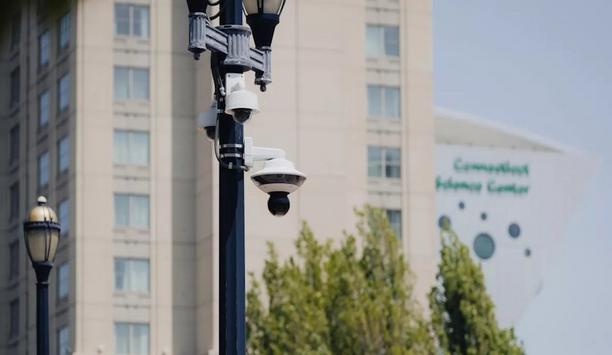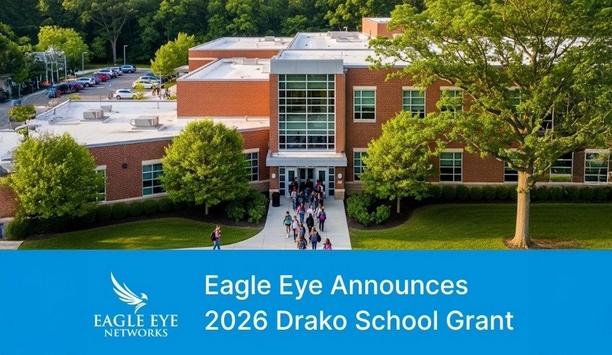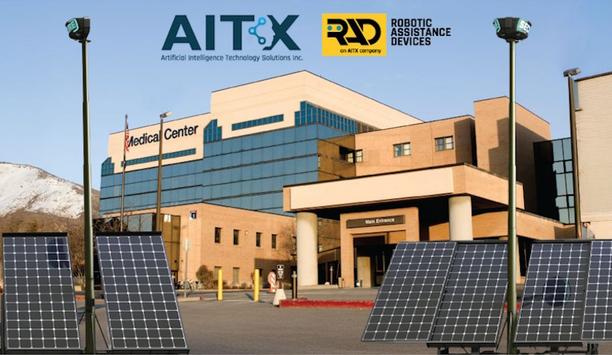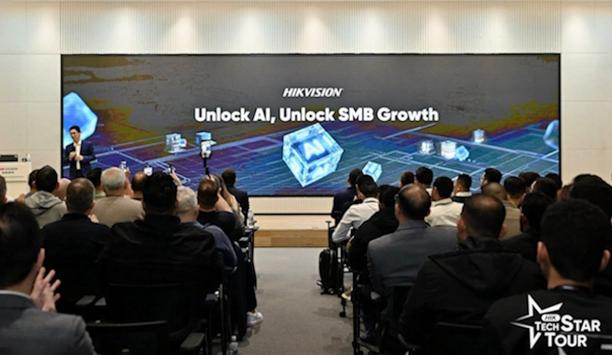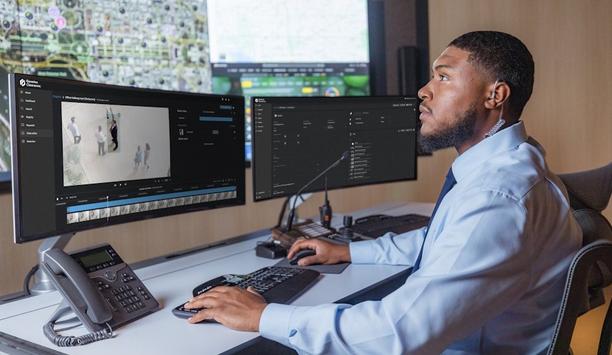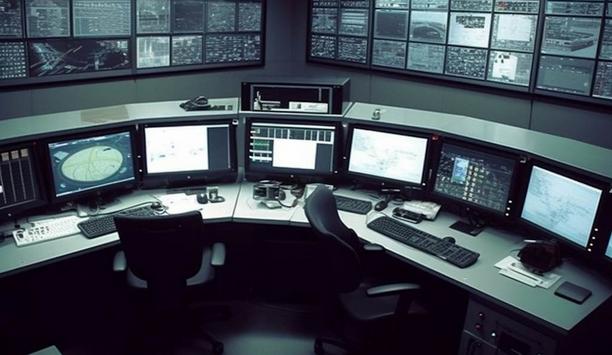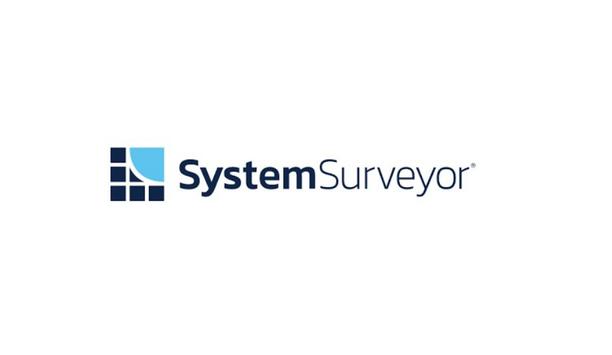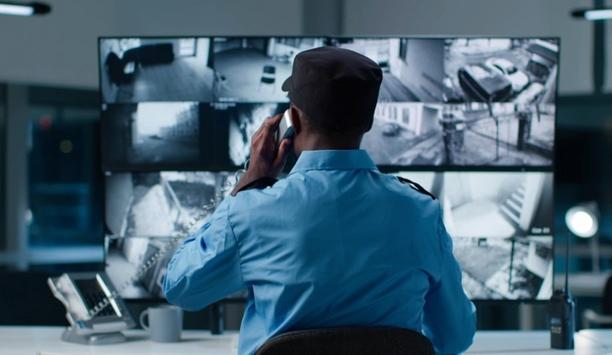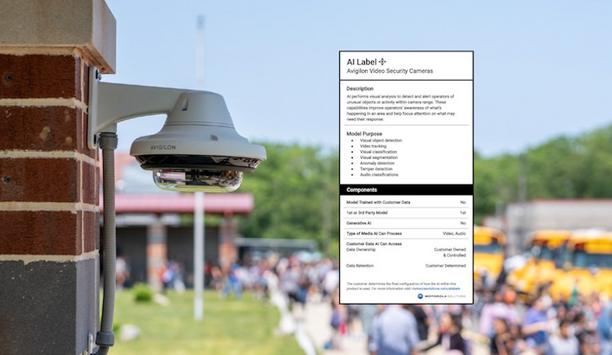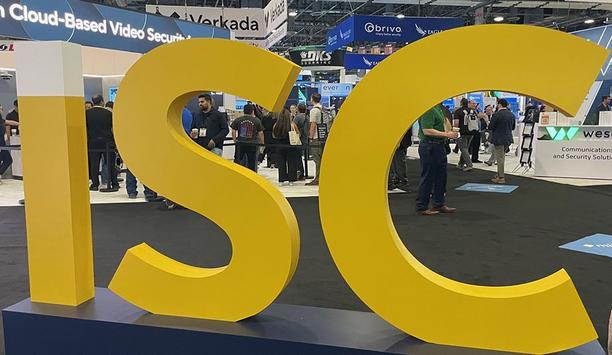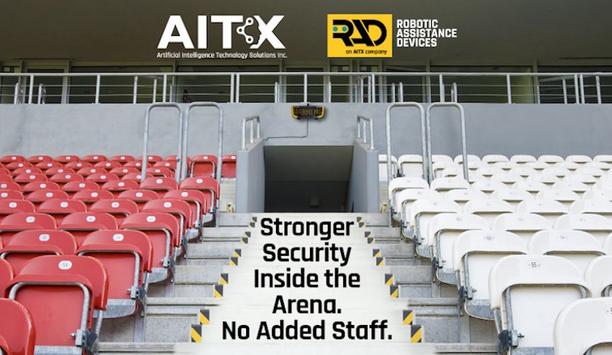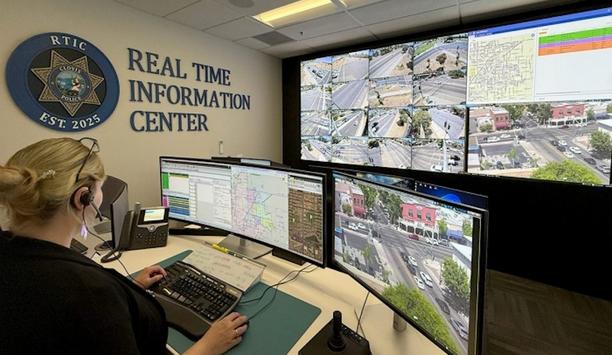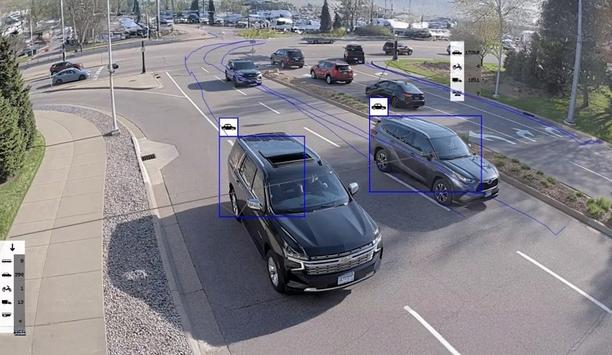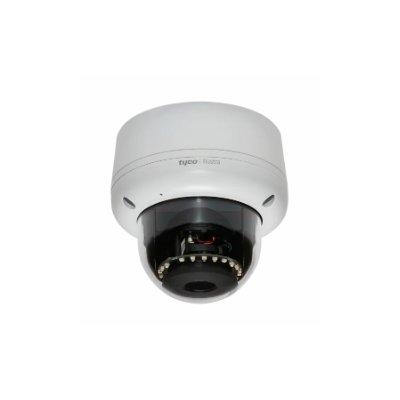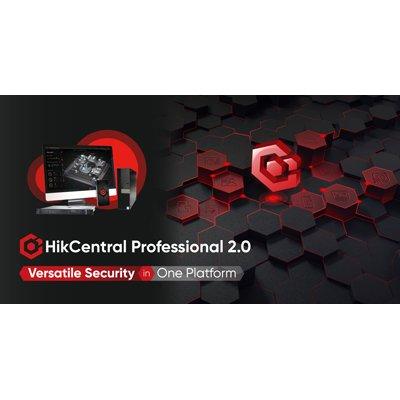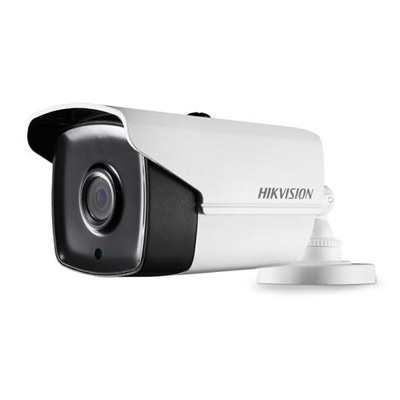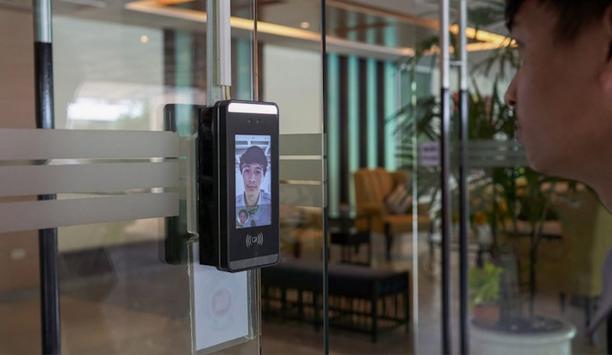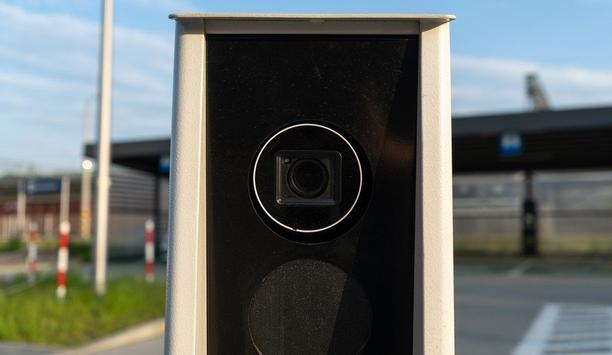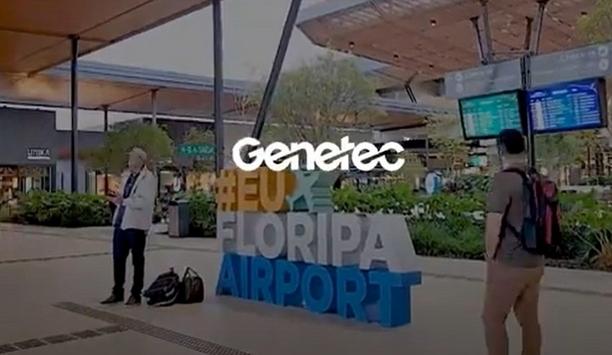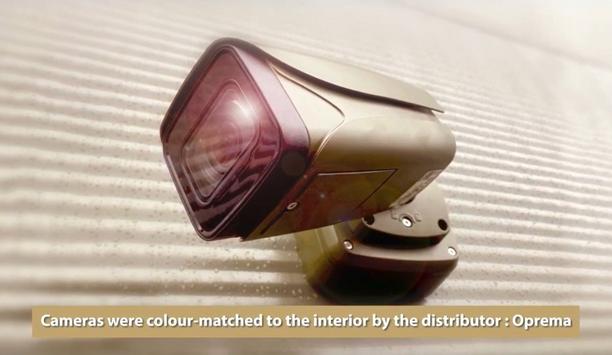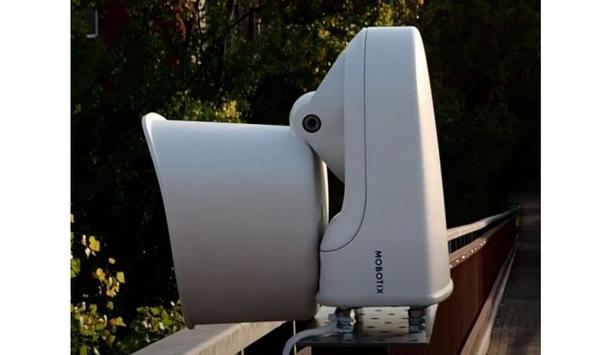License plate recognition
Genetec Inc., the pioneer in enterprise physical security software, announced the launch of Genetec Cloudrunner™ Mobile, a companion app for its vehicle-centric investigation system, Genetec Cloudrunner. Designed for law enforcement and security professionals, the app extends Cloudrunner’s investigative capabilities to the field, giving users faster access to critical vehicle data and alerts wherever they are. Enhanced data analysis Cloudrunner uses automatic license pla...
Drones are poised to fill long-standing gaps in physical security. Fixed cameras leave blind spots, and human guards cannot quickly cover large or complex properties during high-risk moments. Drones fill the gaps, providing a missing mobile layer, offering unmatched speed, broad aerial visibility, and proactive coverage that elevates security from reactive to truly responsive and deterrent. As an added element in security systems, drones complement fixed cameras, access control, and license pla...
The Hartford Police Department’s Capital City Command Center (C4), a state-of-the-art Real-Time Crime Center (RTCC) focused on real-time investigations and enhancing case solvability, announced a continuation of its partnership with Axis Communications. The Hartford Police Department (HPD) plans to deploy cameras at 50 additional intersections, which will expand surveillance coverage across key areas of the city and further enhance the center’s ability to quickly synthesize video da...
Eagle Eye Networks, the pioneer in cloud video surveillance, launched the $1 million 2026 Drako Smart Video Security Grant for Schools, dedicated to strengthening safety and security for students, staff, and community members in K-12 schools, colleges and universities. Awardees may use the grant to implement Eagle Eye’s new AI Camera Gun Detection. Eagle Eye AI Gun Detection “We are on a mission at Eagle Eye to help schools change the way they use security cameras,” s...
Artificial Intelligence Technology Solutions, Inc., a pioneer in AI-driven security and productivity solutions, along with its wholly owned subsidiary, Robotic Assistance Devices, Inc. (RAD), has successfully completed an advanced pilot program with a major healthcare provider. The initial pilot project involved the evaluation of three RIO™ 360 units positioned at two different hospital locations. Having successfully completed the pilot program, these three units will now s...
Hikvision has introduced a suite of products, solutions, and services designed to help small and medium-sized businesses (SMB) and their security installers work smarter and grow faster. The launch event, called "Unlock AI, Unlock SMB Growth" and part of the HikTech Star Tour 2025, brought together Hikvision's SMB business partners from around the world at its campus in Hangzhou, China. At the core of these innovations are the Hikvision Guanlan Large-Scale AI Models. These are boosting performa...
News
Pimloc, a pioneering AI video privacy and analytics company, now announced the launch of its new Video Search feature for the Secure Redact platform, designed to help law enforcement accelerate video review while preserving privacy and evidential integrity. The Video Search feature enables officers to locate specific scenes, objects and individuals in video recordings based on attributes such as clothing, quickly identifying relevant footage without manually reviewing every frame. Once identified, these elements of the video can be securely redacted, allowing investigators to focus on critical evidence efficiently and responsibly. Secure Redact’s precise redaction By reducing the time required to review video with search and coupling that with Secure Redact’s precise redaction, it allows agencies to manage digital evidence more effectively while safeguarding the privacy of individuals captured in footage. “Video evidence is critical to modern policing, but reviewing hours of footage can be slow and resource-intensive,” said Simon Randall, CEO and Co-Founder of Pimloc. “Secure Redact’s new Video Search capabilities allow officers to quickly locate what matters most while protecting sensitive information. It helps agencies work smarter, accelerate investigations, and maintain public trust, all without compromising privacy.” Pimloc’s Secure Redact platform Pimloc’s Secure Redact platform supports automated redaction for faces, license plates, and other sensitive elements. Video Search builds on this foundation, integrating seamlessly into existing workflows to enhance efficiency for investigative teams. The feature supports body-worn cameras, CCTV, mobile phone footage, and other video sources, providing a consistent, privacy-first approach to digital evidence management. “With Video Search, we’re allowing officers to pinpoint critical footage quickly and reducing hours of manual review to minutes. This lets teams concentrate on solving cases rather than sifting through irrelevant video, all while maintaining strict privacy controls,” concluded Randall. The Video Search feature will be available soon to all Secure Redact customers.
At IACP 2025, at booth #1085, Genetec Inc., the pioneer in enterprise physical security software, will showcase its latest public safety solutions that help law enforcement agencies and security professionals unify operations, streamline investigations, and enhance situational awareness. Visitors to the show will have the opportunity to experience first-hand demonstrations of Genetec Cloudrunner™, Citigraf™, and Clearance™, exploring how these solutions provide a connected and proactive approach to public safety. Cloudrunner: New mapping tools Cloudrunner has vehicle-based investigative abilities, enhanced by new mapping functionality features Cloudrunner delivers vehicle-based investigative capabilities, enhanced by new mapping functionality features. These tools provide investigators with an intuitive way to visualize automatic license plate recognition (ALPR) data, uncover movement patterns, and locate vehicles of interest. The system also enables investigators to view all nearby connected Cloudrunner cameras and request access to third-party cameras directly from the interface. This strengthens collaboration and helps law enforcement agencies, businesses, and security stakeholders expand their investigative reach. Clearance: Enhance collaboration with digital evidence management Clearance enables agencies to collect, manage, and securely share digital evidence, reducing reliance on DVDs and shared drives. Clearance can support different sources of evidence, such as images, forensic data, video and audio recordings, documents, and license plate reports, all organized into cases to improve investigative efficiency. The evidence can also be shared for collaboration with internal and external stakeholders. Clearance supports multiple video formats that can be reviewed directly in a web browser and streamlines video requests through custom request forms and approval workflows. With encryption, configurable access controls, and built-in audit trails, agencies can ensure that sensitive evidence is accessible only to authorized users and that all activities are tracked to maintain the chain of custody, providing secure and reliable digital evidence management throughout an investigation. Citigraf: Proactive situational awareness for safe cities Cybersecurity is built into the platform, and its scalable plan allows agencies to adapt operations Citigraf consolidates city-wide sensor data – such as traffic cameras at intersections, community partner cameras, ALPRs at key city entry points, gunshot detection systems, automatic vehicle locator (AVL) units, and more – into a unified real-time crime center (RTCC) dashboard. It allows operators to correlate Computer-Assisted Dispatch (CAD) calls with nearby camera recordings, providing greater insights into what’s happening before units arrive. Cybersecurity is built into the platform, and its scalable design allows agencies to adapt operations as infrastructure and safety needs evolve. Improve operational efficiency “With Cloudrunner, Citigraf, and Clearance, law enforcement professionals can unify their public safety efforts, extract actionable insights, and respond to incidents faster,” said Phil Malencsik, Vertical Account Manager at Genetec. “These solutions help agencies improve operational efficiency, manage evidence securely, and strengthen collaboration, ultimately keeping communities safer.”
Blaize Holdings, Inc., an edge AI computing pioneer, announced that its edge AI platform will be deployed across more than 250,000 intelligent surveillance endpoints beginning in Q2 2025 and continuing through 2026 — supporting a national-scale transformation of real-time smart infrastructure across Southeast Asia through a scalable, hybrid AI deployment. The total value of the contracted purchase order is approximately $56 million, with $6 million in initial revenue expected to be recognized across Q2 and Q3 of fiscal 2025. Adoption of real-world AI The solution’s hybrid AI architecture enables seamless coordination between edge inference and centralized analytics This deployment represents a pivotal milestone in the adoption of real-world AI, delivering edge-native intelligence for urban infrastructure, traffic monitoring, and public safety applications. The solution’s hybrid AI architecture enables seamless coordination between edge inference and centralized analytics — essential for dynamic urban environments. Blaize’s Graph Streaming Processor (GSP) and multimodal inference architecture were central to the selection, enabling efficient, scalable analytics across mission-critical workloads. Blaize’s edge AI platform “Blaize’s edge AI platform gave us exactly what we needed to accelerate our next-generation public safety deployments — powerful multimodal processing, seamless integration, and real-time performance,” said a senior advisor to a Southeast Asia smart infrastructure initiative, adding “Its ability to handle multiple sensor types and data streams on a single, efficient system was unmatched.” Blaize systems' core smart infrastructure Initial deployment starts in Q2 2025 with continued expansion through 2026. Blaize systems are powering core smart infrastructure use cases, including: Traffic management and incident response License plate recognition (LPR) Speed and behavioral analytics Multimodal sensor fusion at the edge Next wave of intelligent systems “This is proof that real-world AI transformation is happening now,” said Dinakar Munagala, Co-Founder and CEO of Blaize. He adds, “It reflects the strength of our technology and validates our approach to purpose-built, hybrid AI at the physical edge — bringing together edge inference and centralized intelligence to deliver meaningful outcomes. Blaize is proud to support the infrastructure powering this next wave of intelligent systems across rapidly growing smart city ecosystems.”
In this increasingly connected world, technology has transformed the way people approach safety and security. While on-site security measures such as CCTV cameras and alarm systems have been standard practice for decades, the landscape is rapidly shifting. Central to this evolution is the increasing reliance on remotely monitored systems, which promise enhanced efficiency, coverage, and peace of mind. Traditional security systems These systems provide real-time responses to unfolding events, drastically enhancing security Traditional security systems primarily work as deterrents. They rely on the visible presence of cameras or the knowledge of an active alarm system to dissuade potential threats. However, what happens when these deterrents fail, or when a particularly brazen intruder decides to proceed regardless? This is where off-site monitoring takes the lead. By actively watching and assessing potential threats, these systems provide real-time responses to unfolding events, drastically enhancing security measures’ effectiveness. The power of real-time responses One of the major advantages of off-site monitoring is the immediacy of the response. When an alarm is triggered or suspicious activity is detected, the monitoring center can instantly assess the situation and respond accordingly. This might involve activating on-site alarms, alerting local law enforcement, or contacting designated key holders. Statistics from the UK Home Office suggest that timely interventions can significantly deter criminal activities, making the role of real-time monitoring even more crucial. Key benefits of off-site monitoring 24/7 surveillance: Remote monitoring offers continuous coverage, ensuring security round-the-clock. This consistent monitoring means that even activities outside of business hours are under scrutiny, providing peace of mind to property owners. Cost-efficiency: Maintaining a full-time on-site security team can be expensive. Remote monitored systems offer comprehensive security at a fraction of the cost, providing both affordability and efficiency. Immediate threat assessment: Upon detecting any irregularities, off-site monitoring teams can swiftly evaluate the situation’s severity, allowing for a more informed and rapid response. Data storage and retrieval: Many remote monitoring services also offer cloud storage solutions, ensuring that recorded footage is safe, easily retrievable, and protected from potential tampering or damage at the physical location. Enhanced safety: Having security responses orchestrated from an off-site location ensures the safety of on-site staff and reduces the risk of confrontations. Integration with modern technologies These technologies can discern patterns, recognize license plates, and even detect unusual behavior The true potential of remote monitored systems is realized when they’re integrated with modern technologies. Advanced analytics, artificial intelligence, and machine learning algorithms can predict and identify threats more accurately. These technologies can discern patterns, recognize license plates, and even detect unusual behavior, making off-site monitoring even more powerful. The world of remote security is ever-evolving. As new threats emerge, so too do the technologies and strategies to counter them. For users of remote monitored systems, this means continuous upgrades and updates, ensuring that their security measures are always a step ahead of potential intruders. Shift towards off-site monitoring The shift towards off-site monitoring in security represents more than just a technological trend. It’s a response to an increasingly complex threat landscape, where the boundaries between the digital and physical worlds are blurring. By harnessing the power of remote monitored systems, businesses and homeowners alike can enjoy a level of security and peace of mind that was previously unimaginable.
This week, System Surveyor launched Camera Advisor, a feature available on System Surveyor’s web-based site survey and collaborative system design platform that helps users select the right video surveillance camera for each deployment. By identifying the specific resolution requirements needed for specific video analytics, license plate recognition (LPR), people counting, object recognition, and other AI-based applications, Camera Advisor simplifies the system design process by identifying the ideal camera for each unique application. Camera Advisor Camera Advisor ensures users select the right camera for each unique deployment area Based on the trusted industry standards of DORI (Detection, Observation, Recognition, Inspection), Camera Advisor streamlines complex technical decisions. Using the industry’s only two-way recommendation capability, Camera Advisor allows users to choose a camera and then view its resolution or select a desired resolution, then choose from a set of recommended cameras. With this ability to visualize a camera’s area of coverage (AoC), image quality (i.e. pixels per foot) and resolution at various distances, Camera Advisor ensures users select the right camera for each unique deployment area, streamlining the system design process and preventing human error. Simplifying the system design process “Our mission at System Surveyor has always been to simplify the system design process through powerful, intuitive and collaborative tools,” said Christopher Hugman, CEO of System Surveyor. “With the launch of Camera Advisor, we’re taking a major step forward in helping security professionals make smarter, faster decisions when selecting surveillance cameras. We want to empower our users to design systems with greater accuracy, efficiency, and confidence.” For system integrators, Camera Advisor helps set customer expectations for image quality. For end users, Camera Advisor gives security professionals the confidence to select the right camera for their application. Key features: Identify the ideal cameras for AI, video analytics, LPR, people counting, object recognition and more Leverage DORI standards for real-time visualization, measuring Pixels Per Foot, Angle and Distance Narrow the preferred surveillance cameras to automate a bill of materials No need to switch between different tools or reference sheets Learn more about System Surveyor’s Camera Advisor.
Rhombus, a pioneer in cloud-managed physical security, now announced the launch of four new security cameras purpose-built to meet the evolving safety demands of modern businesses. From expansive campuses and facilities to tight, sensitive spaces, these new additions to the Rhombus portfolio give security and operations teams powerful new tools to eliminate blind spots, scale with confidence, and sharpen situational awareness through AI-powered intelligence and automation. Product release of four cameras The product release includes four cameras: R360S, a next-generation fisheye camera delivering seamless 360° visibility and immersive de-warping. R540, an AI-enhanced bullet camera designed for large-scale perimeter monitoring. R545, a long-range telephoto camera ideal for license plate recognition and distant monitoring. R150, an ultra-compact camera built to secure tight or high-traffic locations without drawing attention. Rhombus’ unified cloud platform Each camera tightly integrates with Rhombus’ unified cloud platform, enabling advanced analytics Each camera tightly integrates with Rhombus’ unified cloud platform, enabling advanced analytics, real-time alerts, and remote access via a single pane of glass. “Physical security isn’t just a question of coverage anymore,” said Dave Gustafson, Vice President of Hardware at Rhombus. “Successful deployments require context, responsiveness, and scalability. Our newest cameras are precision-engineered to give organizations maximum flexibility for their use case, while delivering continuous insights through powerful AI and cloud integration.” R360S: 360° visibility with real-time de-warping The R360S reimagines fisheye surveillance with crystal-clear 12.5MP resolution, providing complete coverage from a single ceiling-mounted camera. Advanced onboard processing eliminates fisheye distortion with panoramic or quad views, removing the visual distortion and blind spots common to traditional wide-angle systems. Especially well-suited for retail floors, open offices, and lobbies, the R360S simplifies deployments without compromising visibility. Using stereographic lens technology with seamless perspective adjustment and custom tile views, it preserves clarity across every angle and adds dual microSD local storage and IoT sensor connectivity for flexible deployments. R540 and R545: high-performance perimeter protection R540 is built for general perimeter applications across expansive outdoor areas such as school campuses The R540 is built for general perimeter applications across expansive outdoor areas such as school campuses, parking lots, and distribution centers. With AI-powered threat detection and an extended field of view, the R540 proactively identifies potential threats and escalates alerts to designated personnel before incidents occur. The camera pairs a 4K Ultra HD sensor with a motorized varifocal lens and zero-touch provisioning, plus dual microSD slots for continuous local recording. Rhombus’ AI-driven features and analytics tools The R545 adds long-distance precision with a 2.5x zoom and telephoto optics, maintaining exceptional clarity at extended ranges. Its accuracy makes it ideal for license plate recognition, corridor surveillance, or securing wide-open boundaries with fewer cameras. Both cameras are built to endure harsh weather, support flexible mounting, and integrate fully with Rhombus’ AI-driven features and analytics tools. R150: small-space security with discretion R150 provides the same core abilities as larger Rhombus cameras, such as AI-powered detection The R150 is Rhombus's smallest camera yet, purpose-built to deliver discreet, high-performance surveillance in sensitive or space-constrained environments. The sleek design makes it ideal for ATMs, museum walls, healthcare counters, or boutique retail shelves—locations where security matters but space is at a premium. Even within a small form factor, the R150 provides the same core capabilities as larger Rhombus cameras, including AI-powered detection, remote access, and full cloud management. From fisheye to telephoto, AI-powered physical security All four cameras run on the Rhombus cloud-managed platform, which unifies video surveillance, access control, environmental sensors, and alarm monitoring in one system. Customers can configure alerts, automate workflows, and manage every site from a central console Customers can configure alerts, automate workflows, and manage every site from a central console that blends cloud and edge processing for low-latency detections, enterprise-grade security, and smooth scale from a single location to multi-site operations. The new camera lineup is fully compatible with Rhombus’ AI features (including facial recognition, vehicle detection, people counting, and natural language search) and integrates with 50+ business systems through open APIs. Automated physical security “From wide-area visibility to pinpoint precision, our newest cameras give organizations the tools to scale their security infrastructure intelligently and affordably,” said Rickey Cox, VP, Product Management at Rhombus. “They are designed to meet businesses’ demand for more agile, automated physical security across all types of environments.” Availability The R360S, R540, R545, and R150 are now available via Rhombus authorized partners. Organizations interested in upgrading their security infrastructure with the latest Rhombus solutions can learn more or request a demo on the website.


Expert commentary
Artificial Intelligence isn’t just a buzzword anymore. It has become part of our lives, and its uses and applications are growing every other day. Even the public sector, which usually is a late adopter of new technologies, has come onboard this new train. Law enforcement, in particular, has seen the advantages different AI technologies can offer to their work and has started to integrate them into their workflow and daily routines. But there is much more to come. Task automation: AI as a workhorse Due to the increasing importance of media files in police investigations, current police cases have an increasing amount of digital files to be analyzed. Videos from mobile phones, computer files, sound recordings, voice messages from chat applications…the list is almost endless. But, in contrast to other types of digital files, like documents or PDFs, it is not possible to search directly a certain information in a video. It has to be watched by someone. And that takes an inordinate amount of time for a human being, as there can be hundreds of videos in a case. This is one of the areas where artificial intelligence shines. Modern analytics systems are able to find almost any kind of information in media files due to the improvement of artificial vision, object recognition and face biometrics. It is simply a matter of feeding the hundreds or thousands of media files to a AI analyzer, which will work through them and find specific sounds, words, faces, cars, etc. Case of law enforcement On top of that, an analyzer does not tire after long work hours and does not make errors What is more, unlike human officers, these systems can work 24/7 which speeds up investigations considerably, as more evidence is found in less time. On top of that, an analyzer does not tire after long work hours and does not make errors. This is why police work can be helped greatly by AI Analytics, as it frees police officers to do high value work, instead of endlessly watching videos on a computer of listening to audio recordings, in search of evidence. As soon as the system finds what the officer has specified (a face, name, number plate, object, etc.) it sends an alarm to the officers’ phone, so he or she can take a look and decide what to do with that information. Despite AI being touted as a danger to many workplaces, in the case of law enforcement, it is a valuable tool to help police do more, with more accuracy, and in less time, freeing officers from the repetitive and boring work of checking mountains of evidence in search of clues. The AI Analyzer landscape The field of AI analytics is expanding constantly and new types of analysis are being discovered that may be helpful to police or intelligence. The most used analyzers today are probably Automatic License Plate Recognition (ALPR), object and face recognition. But OCR is equally useful not just for reading documents, but also signs and logos that may appear in pictures or videos, to help identify a location. And for audio (as in interception or surveillance recordings) there is speech-to-text (S2T), translation, Speaker ID, audio fingerprinting (AFP) and natural language processing (NLP) which is able to extract sentiment from what is said. All of these have their application in daily police work and can save time in investigations or make them possible in the first place. But looming on the horizon are new possibilities, which we will discuss later and that are even more powerful. So the field of AI Analytics is, by no means, a closed one. Generative AI in law enforcement LLMs will be an important part in all those tasks related to investigate large sets of documents For the past year, the term “Generative AI” has become part of our general vocabulary, although most of the time we just say ChatGTP, Copilot o similar. The large language models (LLM) use Deep Learning and different AI strategies to, amongst other things, analyze and summarize vast amounts of information, in order to generate a short report with the highlights. This can be of use for Law Enforcement in all those cases that have great amounts of documents that may contain evidence. Again, this is a case like the above, where AI helps speed up operations by doing the grunt work much quicker than any person could. The difference is in the Deep Learning part. The model can be tuned to specific needs (like financial crimes, for example) and will get better over time when dealing with specific sets of documents. Thus, LLMs will be an important part in all those tasks related to investigate large sets of documents during a case. What the future holds As with all technology, it is virtually impossible to predict what the future will hold. Because any breakthrough can upend complete sectors, as demonstrated by ChatGPT not that long ago. However, there are several promising AI technologies in the pipeline, some of which are already being tested and perfect around the world: Behaviour analysis: as facial recognition systems get better and better, they are not only able to recognize faces, but also facial expressions. This means that AI systems could be assisting during interrogations, to evaluate the truthfulness of what is being said. Combined with the analysis of small voice inflections, they can be a non-invasive “lie detector”. Robotics: already in use by many police forces around the world, robots are going to be ever so important. Particularly the autonomous kind, which is able to do missions on its own, without a human behind the controls. This, combined with swarm technology, could be an incredible help in disaster areas, where time is of the essence in locating victims. Predictive policing: thanks to pattern analysis, predictive policing, which has been to the test several times already, will be an important part of police work, to figure out where to send units or concentrate surveillance efforts. In short, AI has much more to offer, and we are going to see and incredible evolution of this technology applied to law enforcement, over the next years.
In the past, security and IT teams operated independently, but today collaboration is critical. Modern security systems rely on various devices and systems that are linked to internal and external networks. Without IT involvement, physical security can become a weak point for cybersecurity. Although these groups have made headway in partnering up to ensure the successful implementation of new solutions, often there’s still a disconnect. Differing skills, priorities, and unique ways of thinking have contributed to siloed ways of working. Unified security technologies Thankfully, solutions do exist to help improve coordination between teams and departments Other factors can also make collaboration more difficult. Budget limitations and staff turnover may result in a lack of specialized security training among operators, who don’t know which stakeholders to engage or when. Staff may be willing to collaborate, but do they know who should be alerted when there’s an event? If everyone is alerted to everything, those who don’t need that information will eventually start to tune out. Thankfully, solutions do exist to help improve coordination between teams and departments. Unified security technologies can enhance collaboration, streamline communication, and improve response times. This enables cross-functional teams to respond faster, make better decisions, and work together to enhance overall security. IT and physical security teams Physical security teams are experts at identifying and mitigating physical threats to the organization. IT teams know the ins and outs of keeping systems and networks secure. Both roles and skill sets are critical to securing the enterprise, but siloed operations create barriers to effective collaboration. Because IT and physical security teams have different mandates, meeting the needs of both can be tricky. In some organizations, different departments or specialties also have their own reporting structure and may have different ways of working. Silos may even exist within departments. Overcoming challenges to collaboration Addressing these challenges is the first step toward improving collaboration For example, floor security, dispatchers, investigators, and loss prevention specialists may be used to operating independently in their day-to-day routines. They may not always share data or involve each other in decision-making. Pioneers of these departments are used to being in charge of their domains and may resist initiatives that appear to threaten this independence. Addressing these challenges is the first step toward improving collaboration. Organizations need effective tools to filter out the noise and ensure that the right people get the information that’s relevant to them every time. There are tools available to help teams collaborate effectively, stay accountable for completing tasks, and keep track of what’s been done while maintaining departmental goals and objectives. The right technology can help break down silos The first step to improve collaboration is to break down silos between your security systems. Choosing a unified security platform creates a solid foundation for cross-functional collaboration. It ensures that your physical security and IT teams are reading from the same database. Everyone can see potential risks across both digital systems and physical sites. Unified security solutions centralize monitoring, alarm management, and reporting in a single interface. This helps security teams manage incidents, run investigations, and oversee all security policies. Risks of real-time cybersecurity Data from security systems can be useful to analyze and improve operations and customer experience Within the same platform, IT experts can have a comprehensive view of real-time cybersecurity risks. They can also implement a single data protection and privacy strategy across all locations. Built-in cybersecurity tools help to standardize encryptions, multi-factor authentications, user privileges, and more across the enterprise. In many organizations, colleagues from other departments also find great value in having access to this information. Data from security systems can be useful to analyze and improve operations, customer experience, facilities management, and more. There are many ways to collaborate using a unified security system. Depending on your goals and operating procedures, you have different ways to go about it. The starting point is always to simply get everyone on the same page. Leveraging technology for more effective collaboration A unified security software platform can not only manage your video surveillance, access control, automatic license plate recognition (ALPR), and other physical security systems, but also data from many other kinds of IoT devices and databases. The volume of data is immense, but thankfully these systems can offer ways to filter out the noise and keep operators focused on the most relevant data for their work. Being able to quickly gather, analyze, and share data with other team members can make or break an emergency response. In one case, an attack at a convention center was thwarted after a team member monitoring social media mentions of an event noticed threats published online. When security operators were alerted, they were able to use video analytics to identify the suspect at the event. Using a unified security platform, the operators were able to send the camera view to other team members near the suspect. In the end, they were able to stop the attack through multi-departmental collaboration. Right security platform The right security platform can also help you drive more effective and proactive operational decision-making The right security platform can also help you drive more effective and proactive operational decision-making. When bringing datasets from disparate systems together, it's easier to discover relationships and make changes to business operations. For example, in a retail environment, combining access control, heat maps, and point of sale (POS) data can provide insights into customer activity. This kind of data may be used for things like loss prevention, but it can also be helpful to improve customer experience by improving traffic flow or directing staff toward the busiest areas of the store. The importance of automation One of the most important ways a unified security platform can optimize operations and encourage collaboration is to leverage automation to prioritize and triage alerts. This reduces false alarms and streamlines emergency responses. The reality today is that security operators aren’t always specialists. In K-12 school campuses, for example, the person monitoring the system is often an administrator or teacher. A non-specialist operator may be comfortable using the system in their day-to-day routine, but what about when the unexpected happens? If they don’t know what to do in an emergency, precious time may be wasted while they look up written instructions or call a colleague to help. Instead of keeping your SOPs in a paper binder, you can digitize them so that your security platform guides operators. They immediately have the steps to follow in an emergency. The system can even automatically alert internal or external stakeholders if certain conditions are met. Pros of automation Automation may also reduce false alarms. Nuisance alerts are a real problem for many organizations because they pull resources away from important tasks. When there are many false alarms, operators can also become desensitized to them, which slows response in a real emergency. Nuisance alerts are a real issue for many corps because they pull help away from vital tasks There are several ways that a unified security platform reduces false alarms. When data from multiple systems is brought into the same platform, a door-forced-open event can be cross-referenced with footage from nearby cameras or motion sensors. The system is programmed to do this automatically and issue a priority alert if there’s both a door forced open and motion detected in a restricted zone. Or, when a door open alert happens, the system can direct operators to first check nearby cameras and then decide whether or not to send a security guard to investigate. Every organization is unique and automations will reflect that. Stadiums or public transit may want to automate notifications to stakeholders’ phones, change the message on a digital marquee, or broadcast a public announcement when there’s something to communicate. In a school context, perhaps there is a panic button under the front desk, which triggers a threat alert. When the button is pressed, all classroom doors are locked from the outside. Teachers can get a text message notification warning them about the threat, and local police are alerted instantly. Practical steps for building a collaborative security environment As exciting as it can be to explore the possibilities of new technologies, it’s important to have realistic expectations. Start with small steps and simplify as much as possible. Operators require time and training to adapt to new systems, and teams that have been working independently may need time to develop rapport and trust with each other. When adopting new technologies, a phased approach is often best to avoid overwhelming staff. If staff are resistant to change, focus on understanding their perspective: what are they trying to accomplish? What motivates them? What are they afraid of? Once you understand what’s driving their objections, you can come up with solutions to work through concerns. In today's rapidly evolving security landscape, fostering collaboration between physical security and IT teams is no longer a luxury—it's a necessity. By breaking down silos, leveraging integrated security technologies, and embracing data-driven decision-making, organizations can significantly enhance their operational efficiency and response capabilities.
As city managers, law enforcement agencies, and first responders face mounting pressure to combat crime and respond to emergencies with limited resources, real-time crime centers empowered by a new generation of data-driven technologies are emerging as an effective force multiplier. Real-time crime centers Real-time crime centers (RTCCs) serve as centralized hubs where dedicated personnel leverage pioneering-edge technologies to analyze diverse data streams and provide critical support to law enforcement and emergency operations. These 24/7 facilities are transforming how agencies gather, process, and act upon information, enabling more proactive and efficient policing strategies. The core functions of RTCCs These centers provide officers with unprecedented situational awareness and real-time intelligence At their core, RTCCs are tasked with three primary objectives: enhancing safety, facilitating identification, and supporting apprehension. By integrating data from a wide range of data sources, these centers provide officers with unprecedented situational awareness and real-time intelligence. Integrated data approach This integrated data approach allows RTCCs to alert officers to potential threats, quickly identify suspects, and guide responders during critical incidents. For instance, in the event of a robbery, RTCC operators can rapidly search camera and license plate data to track suspect vehicles, significantly improving the chances of a swift arrest. According to the Bureau of Justice Assistance at the U.S. Department of Justice, the mission of an RTCC is to centralize a broad range of current and evolving technologies, coordinate sworn and non-sworn human resources, and direct the attention to high-crime areas, active crimes in progress, high-profile or highly recidivistic offenders, and large-scale public events that may require law enforcement presence or response. The technology powering RTCCs The effectiveness of an RTCC hinges on its ability to seamlessly integrate a wide array of technologies: Open Platform Video Technology: At the heart of many crime centers is an open platform video management software (VMS) that serves as the central nervous system, unifying diverse data streams into a cohesive operational picture. By leveraging open APIs and SDKs, the VMS can incorporate a wide range of cameras, sensors, and analytics tools. This data-driven approach to video technology enables seamless alert distribution to both the RTCC and field officers via mobile applications. IP Camera Networks: The eyes of an RTCC, these systems combine fixed, PTZ, multi-sensor, thermal, and other specialty cameras to provide continuous city monitoring. Strategically placed throughout urban areas, cameras offer comprehensive coverage of critical locations such as transportation hubs, commercial districts, and high-crime zones. This network forms the foundation for real-time monitoring and incident response. Sensor Arrays: Beyond visual data, RTCCs employ various sensor technologies. Acoustic sensors can detect sounds such as gunshots, shouts for help, breaking glass, and other sounds instantly alerting officers and cueing nearby cameras. Environmental sensors monitor air quality for gasses, smoke, and other non-visible hazards. License Plate Recognition (LPR): LPR systems act as a force multiplier, continuously scanning for vehicles of interest. By generating real-time alerts for stolen or wanted vehicles, these systems significantly enhance the ability to track suspects and recover stolen property, contributing to reduced auto theft rates. Aerial Surveillance: Many RTCCs incorporate drone technology, providing on-demand aerial perspectives of developing situations. This capability is particularly valuable for monitoring large-scale events, assessing natural disasters, supporting operations in hard-to-reach areas, and serving as a powerful first response for crime scene situational awareness. AI-Powered Analytics: At the heart of many RTCC operations are sophisticated AI algorithms that analyze video data in real-time. These systems can identify a range of suspicious activities, from unattended packages to unauthorized intrusions. By rapidly processing vast amounts of video data, they help operators focus on potential threats and anomalies. Geospatial Mapping: To make sense of the influx of data, RTCCs rely on advanced mapping software. These tools visualize events, alerts, and data streams geographically, allowing operators to quickly identify patterns, clusters of activity, and relationships between incidents. Database Integration: RTCCs maintain direct connections to various law enforcement databases, including local, state, and federal resources like the National Crime Information Center (NCIC). This integration allows for rapid background checks and threat assessments, providing crucial context for ongoing operations. Cloud Infrastructure: The scalability and flexibility of cloud computing are revolutionizing RTCC capabilities. Cloud and hybrid solutions offer secure, off-site storage and facilitate easy data sharing between agencies. This approach not only reduces initial costs but also allows for incremental upgrades, making advanced RTCC functionality accessible even to agencies with limited budgets. Real-world impact RTCC operators tracked shooting suspects via camera feeds, guiding officers to their locationThe proliferation of RTCCs across the United States with over 80 centers in operation speaks to their proven effectiveness. Cities that have implemented these high-tech command centers are reporting significant improvements in response times, clearance rates, and overall public safety. Real-time surveillance In Winston-Salem, North Carolina, the local RTCC leverages over 1,300 live video feeds to provide real-time surveillance across the city. This extensive network, combined with gunshot detection technology and license plate readers, has already demonstrated its value. In a recent incident, RTCC operators were able to track shooting suspects via camera feeds, guiding officers to their location for a quick apprehension. Video analysis by RTCC Similarly, Newport News, Virginia, saw an immediate impact after launching its RTCC in 2021. The center has played a crucial role in solving homicides caught on video and rapidly closing a series of carjacking cases. These success stories underscore the game-changing potential of RTCCs when it comes to solving crimes and gathering evidence. In Memphis, Tennessee, video analysis by RTCC detectives helped identify a shooter in custody following an incident at a community basketball court even when no witnesses had come forward. Identifying suspects with RTCC Officers and analysts can view street and body camera footage to monitor crowds at parades The Jackson Police Department in Mississippi has seen similar benefits since building an RTCC in 2019, part of a broader effort that included deploying 100 cameras and 271 body cams. Officers and analysts can view street and body camera footage to monitor crowds at parades and other events. During pursuits, the cameras provide extra surveillance, allowing officers to identify suspects or witnesses to help solve crimes. Enhancing crime mitigation and emergency response While RTCCs have proven their worth in responding to active incidents, their true potential lies in proactive crime prevention and enhanced emergency preparedness. By leveraging advanced analytics and integrated data sources, RTCCs are evolving into powerful predictive tools for law enforcement. Pattern recognition algorithms For instance, pattern recognition algorithms can analyze historical crime data alongside real-time video feeds to identify potential hotspots for criminal activity. This allows law enforcement to strategically deploy resources, increasing visible presence in high-risk areas before crimes occur. Similarly, anomaly detection systems can alert RTCC operators to unusual behaviors or suspicious activities, enabling early intervention in potentially dangerous situations. Asset and property protection, automated alerts RTCCs can monitor critical infrastructure, government buildings, and other high-value assets 24/7 Asset and property protection is another area where RTCCs excel. By integrating with access control systems and using AI-powered video analytics, RTCCs can monitor critical infrastructure, government buildings, and other high-value assets 24/7. Automated alerts for perimeter breaches, unauthorized access attempts, or suspicious objects left in restricted areas allow for an immediate response, significantly enhancing security postures. Emergency response and preparedness In terms of emergency response and preparedness, RTCCs serve as vital command and coordination centers during crises. Whether facing natural disasters, major accidents, or other large-scale emergencies, RTCCs provide a centralized hub for information gathering and dissemination. Real-time video streams from affected areas, combined with data from environmental sensors and emergency service communications, allow for rapid situational assessment and coordinated response efforts. Post-incident investigation and analysis RTCCs can also play an active role in post-incident investigation and analysis. The ability to quickly compile and analyze vast amounts of data from multiple sources can significantly accelerate case resolution and help identify patterns to prevent future incidents. As RTCCs continue to evolve, their capacity for integrating diverse data streams and leveraging advanced analytics positions them as indispensable tools in modern law enforcement strategy. The future of technology-driven policing The integration of artificial intelligence and machine learning promises to enhance video analytics As RTCCs continue to evolve, they are likely to incorporate even more advanced technologies. The integration of artificial intelligence and machine learning promises to enhance video analytics capabilities, enabling faster and more accurate threat detection. Additionally, the expanding use of drones, subject to FAA regulations, could provide RTCCs with cost-effective aerial surveillance options. Effective and ethical operations However, the implementation of RTCCs is not without challenges. Agencies must navigate issues of privacy, data security, and community trust. Ongoing training for personnel and careful planning are essential to ensure these centers operate effectively and ethically. Data-driven approach Despite these hurdles, the trend toward technology-driven policing shows no signs of slowing. RTCCs represent a shift from reactive to proactive law enforcement strategies, offering a data-driven approach to crime prevention and response. As these centers become more prevalent, they will play an increasingly vital role in helping agencies maximize their resources and make informed decisions, ultimately contributing to safer communities for all.
Security beat
The speed, scale and sophistication of today's safety threats can outpace human capacity to keep up. The implementation of artificial intelligence (AI) is essential to keep people safer and must be designed and deployed transparently. The complexity of today’s AI applications is expanding in physical security, with more AI models leveraging data to tune performance and using third-party application programming interfaces (APIs). In this context, it can be difficult to find clear, consolidated, transparent information about AI’s use in enterprise security technologies. How AI is used across the company’s technologies Motorola Solutions is taking a layered approach to help users easily understand how AI is used Motorola Solutions is taking a layered approach to help users easily understand how AI is used across the company’s technologies, starting at a high level with AI labels affixed to products, and getting more granular with structured information about AI testing, assessments and more. “We are aiming to provide clarity to the user and those they help protect to increase trust and transparency in AI innovation,” says Hamish Dobson, Corporate Vice President, Avigilon and Pelco Products, Motorola Solutions. Importance of AI transparency The AI labels, which have been compared to nutrition labels used on consumer products, are designed to be clear and easy-to-read at a glance. Each label explains the type of AI used, who owns the data processed, human controls, and the purpose behind the product’s specific application of AI. “We regularly seek input from external stakeholders – including customers, partners, consultants, investors, policymakers, and community members – on many aspects of our business,” says Dobson. “We briefed select customers and industry groups on our AI labels initiative and received positive feedback.” He continues: “Like us, customers and industry groups understand the importance of AI transparency and are looking for ways to clarify AI usage in public safety and enterprise security.” AI transparency efforts AI transparency efforts have taken on a variety of forms such as model cards, transparency notes Across industry, AI transparency efforts have taken on a variety of forms such as model cards, transparency notes and, in Motorola’s case, AI labels. The company pledges to continue to engage with industry participants on efforts to advance the overall pace, adoption, and maturity of responsible innovation initiatives across the industry, says Dobson. The AI labels help to increase dialogue and understanding of AI’s use in the security technologies that help to keep people safer. Motorola Solutions is looking to inform customers about how AI is being used to automate mundane tasks and prioritize information that may be critical to performing their roles. Motorola’s L6Q license plate recognition For example, a business using Motorola’s L6Q license plate recognition camera in its parking lot could view the AI label and see that AI is used to help recognize license plate characteristics of vehicles within its view. The label would also help the customer understand that they maintain ownership and control of the data AI can process and can determine the data retention period. What type of AI is being used AI outputs should have human oversight, and a user should understand the sources of data “By providing knowledge of where and what type of AI is being used, our customers can better understand what they are deploying, configure settings appropriately and inform their constituents,” says Dobson. AI-assisted experiences should be designed to be accountable and transparent, according to Motorola Solutions. AI outputs should have human oversight, and a user should understand the sources of data from which suggestions were drawn. AI labels highlight that the data AI can access is customer-owned and controlled, helping to increase confidence that AI outputs are based on that customer's specific data. Responsible and ethical use of technologies The AI label’s “first or third party model” section explains the source of the AI model. A first-party model is developed in-house by Motorola Solutions. A third-party model is developed outside of Motorola Solutions and made available by a third-party vendor; however, it may be customized by Motorola Solutions. MTAC is a multidisciplinary group that advises the company on the reliable and ethical use of technologies “This section aims to foster dialog with our customers around Motorola Solutions’ role in testing, training, and refining the AI model or models used in our products,” says Dobson. Helping to propel the AI Label initiative, the Motorola Solutions Technology Advisory Committee (MTAC) is a multidisciplinary group that advises the company on the responsible and ethical use of technologies, including data and AI. Industry trends in technology’s responsible design MTAC continuously explores new ways to enhance trust with customers and the communities they serve, while helping to keep Motorola Solutions a step ahead of industry trends in technology’s responsible design, development, and use, according to the company. The MTAC “Blueprint” sets out the core principles that drive the approach. “We’re excited by the opportunity to continue to lead in this area through additional innovation, thought leadership, and stakeholder engagement,” says Dobson. Human-centered design New capabilities specifically augment human skills and capacity with the goal of helping humans Rather than replacing human decision-making, AI technologies will, in fact, augment it. Human-centered design is a core principle of the responsible technology “Blueprint” Motorola Solutions is developing. New capabilities specifically augment human skills and capacity with the goal of helping humans spend time on what matters most during a safety or security incident, applying their unique judgment, knowledge, and oversight in high-stakes environments. AI’s recommendations “We purposefully deploy AI to augment human focus, effort and performance,” says Dobson. “We design AI to maximize human strengths like judgment and reasoning and to adapt to changing roles, tasks, risk levels, and cognitive states while keeping AI outputs traceable and transparent, whereby the user can easily see, check and override AI’s recommendations.”
ISC West 2025 in Las Vegas showcased the latest advancements in security technology, offering security professionals a glimpse into the future of the industry. This year's expo highlighted the growing influence of artificial intelligence (AI), cloud computing, and enhanced integration. The pioneering comprehensive and converged security event attracted nearly 29,000 industry professionals to the Venetian Convention Center. Integration into unified platforms Several companies emphasized the importance of cloud-based solutions and the integration of diverse security components into unified platforms. For example, Brivo's Security Suite provides “everything in one platform” – not just access control. Customers only pay for what they use because the system is flexible and scalable from a single door to enterprise level applications. Brivo’s suite includes video, but the system can also tie in with third-party “partners.” Genetec's Security Center allows for more frequent updates through the cloud. Milestone is undergoing a two-year transition to bring its Xprotect system into the future by incorporating Arcules and Briefcam into a video-as-a service product. Suprema introduced BioStar X, which integrates access control and video analytics into a single platform. AI and mobile credentials Axis Communications’ Cloud Connect product announced three new partnerships at ISC West 2025 Axis Communications’ Cloud Connect product announced three new partnerships at ISC West – Eagle Eye Networks, SecuriThings, and Wesco. They join the three partners announced during the first year of Axis Cloud Connect – Genetec, Kone (elevators) and Milestone. AI and mobile credentials were still hot topics at ISC West 2025, but the conversation has evolved beyond amazement at the technologies’ capabilities and now centers on more practical aspects. From the theoretical to the practical “AI and mobility are still the ‘flavors de jour,’ but messages are evolving to manifest AI for better outcomes,” says Heather Torrey, General Manager, Commercial Security, Americas, for Honeywell Building Automation. The company has reframed its security portfolio to be very building- and business-focused, continuing to grow and evolve after the recent acquisition of LenelS2. “From the theoretical to the practical, we want customers to be part of the conversation so we can deliver AI that is meaningful to them, focusing on what’s most important,” says Torrey. Under Honeywell’s new ownership structure, “each part of the business can be more focused on customers’ needs,” she says. Honeywell continues its journey around mobile access and credentialing and migrating to cloud solutions. Innovations in Access Control Gallagher’s new Quickswitch access control board simplifies the migration from legacy systems Access control remains a critical component of security systems, and ISC West 2025 showcased several innovations in this area. Acre is releasing “Gallery,” its version of the App Store for access control. DormaKaba is launching the Keyscan KC Series door controller with TCP/IP connectivity and enhanced features. Gallagher’s new Quickswitch access control board simplifies the migration from legacy systems. Johnson Controls highlighted its C-Cure command center and C-Cure IQ web client, offering a unified approach to access control and video. Hardware integrations for security panels For service provider Alarm.com, hardware products prepare a path to greater customer experiences, says Abe Kinney, Alarm.com’s Director, Product Management, who oversees hardware integrations for security panels, sensors, video, etc., and drives new product development. “We are looking to bridge the physical world to digital world,” he says. “We want to bring an advantage to our dealers that they can bring to customers.” Because Alarm.com’s customers pay a monthly fee, the products must be durable and economical, says Kinney. “It should work with no need for truck rolls.” The importance of longevity and flexibility Products are evaluated based on features, price, and ease of installation Products are evaluated based on features, price, and ease of installation. In particular, longevity is important for the Alarm.com’s pro channel. There is also a growing emphasis on deterrence industrywide. Says Kinney: “We recognize that detection is part of it, but we need to prevent problems from happening in the first place. And the industry is re-evaluating.” When it comes to cloud intelligence, Eagle Eye Networks puts the emphasis on flexibility. They offer AI that can perform anywhere on the system infrastructure, on the camera, on their on-site bridge device, or in the cloud. They support their own AI and also any AI product from a third party. “We focus on what customers want from the data AI detects,” says Hans Kahler, Eagle Eye Networks’ Chief Operating Officer. Integration with other systems A timely alert from gun detection could save a life, but AI can also generate information that might be used and analyzed later, such as point-of-sale information, dwell time, foot traffic, etc. “What people want is the ability to work with the data for business intelligence,” says Kahler. Integration with other systems provides new opportunities for customers: For example, a license plate reader at a restaurant drive-thru could trigger customization of the menu board digital signage based on the customer’s previous buying pattern. Relentless Innovation Assa Abloy handles more than 40 million SKUs for all its various brands, faked in 28 factories in the US Assa Abloy handles more than 40 million stock keeping units (SKUs) for all its various brands manufactured in 28 factories in the United States. Merely complying with regulations such as the “Buy American Act” is a monumental effort considering the massive product line, attendees heard at Assa Abloy’s Annual ISC West Breakfast focusing on compliance challenges in the security market. Meanwhile, back at the trade show booth, Assa Abloy focused on “relentless innovation” in every corner of its product line. Assa Abloy’s message: Innovation in security does not have to be about AI or automation. In fact, inventive approaches to products come in all shapes and sizes and at every level of the product portfolio, and innovation is happening faster than ever. For example, the Safebolt product from Securitech, a brand recently acquired by Assa Abloy, can quickly lock down existing doors with the press of a red button on a cylindrical or mortise lock. Temporary Systems to Secure Events Securing events is the focus of Allied Universal's Unified Command Solutions, which specializes in setting up temporary security systems for conventions, trade shows, festivals, construction sites, parades, and other events. They can add technology to situations where previously mostly security officers were used, providing safety/security and enabling more efficient event operation. “We can put cameras anywhere, whether they need power or not, use cell service or WiFi, a localized network or the internet, or whatever,” says Andrew LaMadrid, VP, Sales for Allied Universal's Unified Command Solutions. Event operation and management IDIS came to ISC West looking to leverage new products that they did not promote in the past The focus is on easy implementation, flexibility, and fast setup and removal. “We look for a solution to solve each customer’s pain points,” says LaMadrid. They specialize in setting up and deploying surveillance cameras for safety/security and for event operation and management. Mobile surveillance is a relatively new “piece of our puzzle” when it comes to protecting high-profile events. “People are excited about what we can offer that’s new,” says LaMadrid. Unified Command Solutions has been around for about 12 years and was acquired by Allied Universal last summer. IDIS came to ISC West looking to leverage new products that they did not promote in the past, and visitors were very interested in those solutions, says Scott Switzer, IDIS CEO. “The progression of our product line has been tremendous,” he says. Last year, the IDIS booth offered only basic analytics, but this year they had 30 different advanced analytics including gun and aggression detection using the advanced solution “IDIS Vaidio AI.” What Makes You Different? The most common question IDIS hears at their trade show booth is: “What makes you different?” The answer: They offer an end-to-end solution, including cameras; they manage, control, design from end-to-end; and there is no need for multiple integrations. The time needed to install an IDIS system is significantly less because of the simplicity. “We have customers we have supported and grown together for over 20 years,” says Switzer. The company previously deployed IDIS cameras under the Costar brand before the Korean IDIS brand was introduced into the U.S. (IDIS purchased Costar and changed the name to IDIS America.) “This has been a tremendous show for us; we are looking to build our momentum and let more people know about IDIS,” says Switzer. Managing real AI at the edge The depth of their metadata enables new applications, whether for security or business operations Based in Prague, Czech Republic, and with U.S. offices in Pennsylvania, FF Group provides license plate recognition for harsh environments. Using Axis cameras, they offer “managed real AI at the edge,” selling through a nationwide distributed network, says Alex Osypov, CEO and Founder of FF Group. Markets include parking lots, cities/municipalities, police, government, water systems, etc. The depth of their metadata enables new applications, whether for security or business operations. They are looking to combine and correlate data including LIDAR, RADAR, etc. to exploit the advantages of “data fusion.” Osypov says: “The market is growing because we are involving other adjacent markets.” Unified platforms and advanced tools Several companies are focusing on enhancing security operations centers (SOCs) by providing unified platforms and advanced tools. Axon’s Fusus system “layers” onto existing infrastructure, tying together various sensors into a single interface for real-time monitoring and information sharing. Increasingly, enterprises have invested in a lot of technologies – ac, video, asset trackers – but none of it talks together. Fusus ties all the systems together so that operators no longer have to look at 10 different screens. Rather, there is a “single pane of glass” that shows everything and facilitates sharing of information with law enforcement. Motorola also showcased its Security Operations Center, which integrates hardware, software, smart sensors, communication radios, and broadband devices to streamline incident management.
An attention-grabbing exhibit at GSX 2024 in Orlando involved a robot dog that could open a door. Boston Dynamics robot dog ASSA ABLOY impressed attendees with the robotics demonstration, featuring the Boston Dynamics robot dog that could open a door using either an HID credential or a mechanical grip. This innovation represents a shift toward more autonomous security solutions and is suitable for environments where human access may be limited. ASSA ABLOY impressed attendees with the Boston Dynamics robot dog Operational efficiency Eye-catching exhibits at the GSX in Orlando, showcasing the future of security technology It was one of many eye-catching exhibits at the GSX in Orlando, showcasing the future of security technology, and offering practical solutions to the industry's challenges. For security professionals, the advancements presented opportunities to enhance operational efficiency and to maintain a proactive stance in a rapidly evolving market. Control ID face identification Alongside their robot demonstration, ASSA ABLOY also highlighted the Control ID Face Identification. Access Controller, providing advanced facial recognition access control. From identity management to AI-driven surveillance systems, GSX 2024 offered a glimpse into the tools that can streamline processes, increase security, and reduce costs. Here are some other highlights. ASSA ABLOY also highlighted the Control ID Face Identification More integration with critical infrastructure A major theme at GSX 2024 was the increasing integration of security solutions with critical infrastructure. ALCEA (formerly ASSA ABLOY Critical Infrastructure) is an example. Their globalized software solution ALWIN is designed for managing access control, visitor management, and other security factors across multiple locations. ALCEA's approach involves not only internal collaborations within ASSA ABLOY but also partnerships with external organizations. An example of innovation is the Neenah Foundry lockable manhole cover, blending safety and security. Solving identity management challenges The solution simplifies onboarding and access request changes while ensuring compliance with policies Identity management continues to be a key focus in the security sector, and AMAG Technology addresses this need with its Symmetry Connect product. The solution simplifies onboarding and access request changes while ensuring compliance with policies. For professionals overseeing identity access management, Symmetry Connect provides a streamlined, automated approach, reducing human error and increasing operational efficiency. AMAG also sees a growing demand for efficient visitor management systems, especially in the post-COVID landscape. AMAG’s products cater to the need for enhanced security without overburdening staff. AI and cloud-based surveillance solutions Axis Communications highlighted its advancements in AI and cloud-based video management systems with its AXIS Camera Station Edge and Pro products. These solutions can connect seamlessly to cloud systems, providing security professionals with easy access to surveillance data anywhere. With the increasing need for centralized management, Axis’s offerings ensure that security teams can efficiently manage surveillance with minimal infrastructure. Axis also showcased its commitment to AI-driven analytics based on superior video quality. There were also networked audio solutions for public announcements and background music, among other uses. Body-worn cameras for corporate and Healthcare uses Traditionally focused on law enforcement, Axon is now expanding its body-worn cameras and TASER technology into corporate, retail and healthcare environments. Their Axon Body Workforce camera is a practical solution for protecting frontline workers in high-risk environments. Axon also introduced drone-based solutions for real-time aerial awareness Axon also introduced drone-based solutions for real-time aerial awareness, a significant benefit for large campuses or remote locations. As more industries adopt corporate surveillance systems, Axon’s offerings provide flexible, scalable solutions that address the need for real-time, actionable intelligence. Cloud-based access for smart buildings Brivo’s native cloud systems and flexible credentials offer practical, future-proof security options Brivo showcased how cloud technology is revolutionizing access control by offering systems that integrate seamlessly with other smart building platforms. Their open API approach enables collaboration with IT teams, bridging the gap between physical security and IT management. Brivo’s new partnership with Comcast Smart Solutions illustrates how large enterprises can implement advanced solutions, including access control while maintaining flexibility. For professionals managing complex building environments, Brivo’s native cloud systems and flexible credentials offer practical, future-proof security options. AI-powered multi-sensor camera Hanwha focused on an AI-powered multi-sensor camera, equipped with an NVIDIA processor capable of running complex analytics. In addition, Hanwha’s new AI camera technology can process multiple video streams simultaneously, either stream from its sensors or outside cameras, enabling better tracking of objects in complex environments. Their eight-channel AI Box, which converts legacy cameras into AI-enabled devices, is an attractive solution for professionals seeking to upgrade existing systems without the need for complete overhauls. For security teams looking to enhance situational awareness, Hanwha’s AI-based offerings provide advanced, scalable solutions. Workflow management and hybrid cloud security Genetec continued the theme of integrated solutions with their Operations Centre module for Security Centre, which consolidates work management into a single platform. Built on lean management principles, this system simplifies workflow for security professionals, promoting real-time collaboration across mobile and web platforms. As the industry shifts from on-premises systems to hybrid cloud solutions, Genetec’s products provide seamless transitions for organizations. Their new SaaS Security Centre also allows for natural language video searches in multiple languages, making it easier for global teams to manage operations across locations. Simplifying remote surveillance The company’s focus on scalability and efficiency is demonstrated by the “Eagle Eye Complete” subscription service Eagle Eye Networks showcased their continued international expansion, highlighting a new data center opening in Saudi Arabia and new hiring initiatives in Australia and Europe. Their “Eagle Eye Anywhere” solar-powered camera system exemplifies the move towards flexible, easy-to-install solutions that can be deployed in remote locations. Integrators benefit from simplified maintenance through remote management, reducing the need for on-site support and ensuring operational continuity. The company’s focus on scalability and efficiency, as demonstrated by the “Eagle Eye Complete” subscription service, reflects the broader industry’s shift toward managed security services. Tailored solutions for commercial clients Everon continues its transition away from its former identity as ADT Commercial. Claiming the status of a competitive commercial integrator, Everon is reinventing itself by offering customized billing and monitoring solutions for a range of industries. Their cloud-based business intelligence platform, which combines video surveillance with data analysis, is aimed at enhancing operational awareness by detecting anomalies such as OSHA violations or retail point-of-sale exceptions. With AI-driven dashboards, clients can customize their security solutions to meet specific needs, reflecting a growing demand for tailored, data-driven security applications. Innovation through cloud and mobile LenelS2 is part of Honeywell, and they emphasized their investment in cloud and mobile solutions at GSX 2024. Their "Enterprise OnGuard Cloud" platform, launched in June 2024, is a testament to the growing demand for cloud-enabled access control systems. With the addition of NFC-enabled Blue Diamond credentials, LenelS2 is pushing towards smarter, more secure mobile access options. The strategic combination of Lenel’s solutions with Honeywell’s infrastructure offers users enhanced engineering capabilities and global reach. This reflects a broader market trend of integrating mobile devices into physical security protocols. Bringing AI to everyday security LPR system, combined with their Searchlight Cloud Analytics, offers a powerful tool for identifying security risks March Networks highlighted their new AI-driven smart search feature, designed to help security teams quickly detect operational anomalies in retail and financial environments. From identifying misplaced cash in quick-service restaurants (QSRs) to detecting "jackpotting" attacks on ATMs, their solution highlights the increasing importance of AI in enhancing both security and operational efficiency. Their Licence Plate Recognition (LPR) system, combined with their Searchlight Cloud Analytics, offers a powerful tool for identifying and responding to security risks in real-time, emphasising the practicality of AI in daily security operations. Driving sustainability in security Securitas showcased its commitment to sustainability, a growing concern for businesses across all industries. By providing CO2 data for clients and promoting digital tools like mobile credentials, Securitas is leading the charge in creating greener, more sustainable security solutions. Their focus on remote services and occupancy insights offers companies a way to reduce their environmental impact while enhancing security operations. The company’s alignment with science-based targets and circular economy practices signifies the increasing role sustainability will play in the security sector. Future lies in integration The GSX 2024 trade show revealed that the future of security lies in intelligent integration, AI-driven analytics, and cloud-based management systems. The innovations presented will help security professionals streamline their operations, enhance situational awareness, and future-proof their systems. As these technologies continue to evolve, professionals must stay informed about the latest advancements to maintain a competitive edge in the security marketplace. GSX was a great place to start. At the end of the day at GSX, it wasn’t just the robot dog that was opening doors …. to the future of security systems. {##Poll1727925373 - Of the important factors highlighted at GSX 2024, which do you consider most when adopting new security solutions?##}
Case studies
Artificial Intelligence Technology Solutions, Inc., a pioneer in AI-driven security and productivity solutions, along with its wholly owned subsidiary, Robotic Assistance Devices, Inc. (RAD), announced that it has received an order for ten ROSA™ units bundled with ten SARA™ (Speaking Autonomous Responsive Agent) licenses for deployment inside a major sports venue in the United States. The new installations will support the arena’s security team with enhanced monitoring, rapid event detection and autonomous voice-driven response throughout interior zones. Evaluating modern security technologies The arena had been evaluating modern security technologies to address persistent trespassing, vandalism and other unauthorized activity across its interior spaces. This order follows a series of assessments in which RAD solutions demonstrated clear advantages in autonomous detection, operator support and rapid on-site response. The venue is also reviewing additional RAD offerings for broader facility coverage, including ROAMEO™ and RIO™ units for expanded indoor and outdoor protection. How venues can strengthen security “This is an ideal application for ROSA paired with SARA,” said Mark Folmer, CPP, PSP, President of RAD. “These deployments show how venues can strengthen security, improve response times and reduce operating costs with a solution that works around the clock without added staffing.” SARA’s real-time detections ROSA units equipped with SARA, the Company’s multiple award-winning agentic AI platform, will provide continuous event detection, verification and automated voice response, giving on-site staff and remote operators clearer insight into activity across the arena. SARA’s real-time detections and notifications help reduce operator workload, improve situational awareness and ensure that critical events receive immediate attention. This combination allows security teams to focus on higher-value tasks while maintaining consistent coverage. ROSA’s AI-driven security analytics ROSA is a multiple award-winning, compact, self-contained, portable, security and communication solution that can be installed and activated in about 15 minutes. ROSA’s AI-driven security analytics include human, firearm, vehicle detection, license plate recognition, responsive digital signage and audio messaging, and complete integration with RAD’s software suite notification and autonomous response library. Two-way communication is optimized for cellular, including live video from ROSA’s high-resolution, full-color, always-on cameras. RAD has published seven Case Studies detailing how ROSA has helped eliminate instances of theft, trespassing and loitering at mobile home parks, retail centers, hospital campuses, multi-family communities, car rental locations and construction sites across the country.
Amthal has delivered a complete security upgrade at The Maltings Shopping Center, building on a partnership of more than three decades to transform the way the center is monitored and managed. In supporting The Maltings since 2013 and taking on full management in 2017 Amthal could ensure the system remained effective through a dedicated maintenance program until the time came for a complete upgrade. Integrated with the barrier system The new solution introduces 39 state-of-the-art Dahua cameras, including PTZ, 180-degree and AI-powered people-counting models, to provide full coverage across all seven entrances and car parks. Automatic number plate recognition has been integrated with the barrier system to improve vehicle access control, while people-counting technology now delivers reliable visitor data to track peaks and troughs. Active deterrent measures and signage strengthen site protection, supported by EMCS Sentry software to continuously monitor hardware performance and camera availability. Secure on-premises storage ensures all data remains under the center’s direct control. Redesigned digital control desk Says Richard Marrett, Center Director at The Maltings: “The new systems have changed the way we manage the center. The cameras and control desk give us clearer oversight and together with features like people counting and vehicle access ensures we can identify incidents, respond quickly and review activity with confidence. Behind it all is the trust we have in Amthal, built over three decades of working together to keep The Maltings safe and welcoming.” A redesigned digital control desk now brings all live feeds, recordings and analytics together on a single platform, giving the security team clearer visuals and wider oversight than ever before. These features provide greater efficiency, faster response times and stronger protection. Management and security teams All installation work was carried out while the center remained fully open. Amthal partnered with Dahua together with the management and security teams to plan the schedule so that tenants, staff and shoppers experienced no disruption. Kris Hallett, Business Development Director at Dahua Technology UK, added: “The upgraded cameras now capture detail even in low light, and features like auto-tracking reduce the need for constant manual monitoring. People-counting sensors give the team reliable data across key areas, while number plate recognition integrated with the car park barrier has streamlined vehicle access and reduced misuse." "All can be accessed at any time, even remotely. Working alongside Amthal, we were able to introduce all of this without disruption to the center’s daily operations.” New requirements and advances in security technology The original system was first installed in 1995, marking the beginning of a long-term relationship that has seen Amthal support The Maltings in adapting to new requirements and advances in security technology. Paul Rosenthal, Amthal Group Business Development Director, concluded: “Our established partnership with The Maltings demonstrates how we work with clients over the long term. This complete upgrade with latest Dahua technology has delivered an integrated system that is straightforward for the team to use and manage via the new control center. It ensures the center remains safe, accessible and an enjoyable experience with complete peace of mind for tenants and shoppers alike.”
Located in the heart of California’s Central Valley, the Clovis Police Department serves the rapidly growing community of Clovis, California—a vibrant city situated just northeast of Fresno in Fresno County. Home to over 129,000 residents, Clovis is known for its strong community values, family-friendly neighborhoods, and forward-thinking city leadership. Once a historic railroad town, Clovis has transformed into a modern, thriving municipality, consistently ranked among California’s best places to live. Real-time public safety technology Clovis maintains a lean public safety model, with about 130 sworn officers and a total department staff Despite its growth, Clovis maintains a lean public safety model, with approximately 130 sworn officers and a total department staff of about 230 employees. The department takes pride in its reputation for innovation, responsiveness, and community trust, often operating with fewer resources than larger metropolitan areas—yet delivering highly efficient and effective policing services. As the city continues to expand—adding new residential developments, commercial centers, and educational infrastructure—the need for advanced, real-time public safety technology has never been greater. Commitment to innovation and collaboration Recognizing this, Clovis PD launched a bold initiative to build a Real Time Information Center (RTIC)—a centralized hub designed to unify data from hundreds of surveillance cameras, license plate readers, dispatch systems, drone feeds, and body-worn cameras. The department’s goal: enhance officer safety, accelerate response times, and support smarter decision-making across the entire public safety ecosystem. With a deep commitment to innovation and collaboration, the Clovis Police Department is setting the standard for what’s possible in modern law enforcement. The challenge For Clovis PD, the answer began with re-imagining how real-time data is gathered, visualized, and acted upon As technology rapidly reshapes the public safety landscape, Clovis PD faced a key question: How could a lean, high-performing department continue to meet the demands of a growing city while maintaining visibility, speed, and responsiveness across a diverse set of threats and situations? For Clovis PD, the answer began with re-imagining how real-time data is gathered, visualized, and acted upon. The department managed streams of mission-critical information from hundreds of surveillance cameras, LPRs, drones, dispatch systems, and body-worn cameras—but these assets were siloed and difficult to manage from a single point of control. Officers and dispatchers needed faster access to the right information at the right time, and leadership needed a way to centralize command operations without overwhelming staff or adding layers of complexity. Future of real-time collaboration What Clovis required was a unified platform that could make sense of multiple inputs, prioritize action, and scale as the city’s needs evolved. It had to be powerful, but also intuitive and accessible to analysts, officers, and supervisors alike. Most importantly, it needed to be built in a way that would support not just the workflows—but the future of real-time collaboration between departments, field units, city pioneers, and neighboring agencies. That vision became the foundation for Clovis PD’s Real Time Information Center (RTIC)—and set the stage for a successful deployment with RGB Spectrum and Wildfire Technology. The RGB Spectrum solution: Zio and XtendPoint in action At the heart of Clovis PD’s RTIC is RGB Spectrum’s Zio® AV-over-IP platform and XtendPoint™ KVM-over-IP system, providing the centralized control, flexible visualization, and easy expandability the department needed. Powering the visual backbone The Zio 4000 video wall processor seamlessly drives a 14’ × 5.6’ Barco TruePix 0.9 mm pixel pitch LED video wall, displaying live video from across the city, interactive maps, drone feeds, dispatch data, and analytic tools. With 16 HDMI inputs and 12 outputs, Zio acts as the visual brain of the RTIC—integrating diverse content streams into a single pane of glass for maximum awareness. Operators can quickly shift between presets for specific scenarios (e.g., drone deployment, vehicle pursuit, or major traffic events). Video streams are not only viewable in the RTIC but are routed to other locations, including Dispatch, the Emergency Operations Center (EOC), supervisor offices, and field units. Zio also supports future integration with remote web access portals—allowing city officials and council members to view situational data during major incidents. Control with confidence Clovis PD operators use RGB Spectrum’s XtendPoint KVM-over-IP to control and interact with up to eight systems Clovis PD operators use RGB Spectrum’s XtendPoint KVM-over-IP to control and interact with up to eight independent systems simultaneously using a single keyboard and mouse. Each operator station features two 43″ curved 4K displays, creating a panoramic, ergonomic environment that consolidates workflows and boosts productivity. “What sold me on RGB was how effortless it was for everyone to manipulate the screen and display what they needed—everyone had access, and it just worked,” Chief Fleming, Chief of Police, Clovis Police Department. This intuitive plug-and-play interface significantly reduces training time and enables officers, dispatchers, and analysts to work fluidly between tasks—whether monitoring cameras, controlling drones, running license plates, or launching live body cam feeds. Future-ready architecture: Built to expand RGB Spectrum’s IP-based architecture offers the flexibility Clovis PD needs to grow and adapt over time: Drone Expansion: As Clovis expands its DFR (Drone as First Responder) program with multiple Brink drone launch sites, the system will support direct drone video integration into the video wall and remote routing to field teams and fire personnel. Body-Worn Cameras: Using Axon’s new Respond technology, live body cam video is now accessible in real time—giving analysts and dispatchers critical visual data, especially when officers can’t communicate via radio. Mobile Command & Trailers: RGB Spectrum’s architecture enables future integration with mobile assets like camera trailers and portable operations centers, giving Clovis PD the tools to bring their RTIC capabilities to festivals, parades, emergencies, and other offsite events. “We’re not just solving for today’s challenges—we’re setting the foundation for tomorrow’s public safety technology,” said Chief Fleming. The human factor: Designed for everyday use From video wall presets to XtendPoint switching, every component was designed with the operator in mind Despite the complexity of the system’s backend, Clovis PD has found it remarkably easy to use. From video wall presets to XtendPoint switching, every component was designed with the operator in mind. Chief Fleming notes that even with staff rotating through dispatch or new to the RTIC, most users are up and running with minimal training. As the department continues to grow its analytics and drone teams, they’re confident in scaling the system further—without retraining or major technical overhauls. Inter-agency collaboration & City Council engagement The new RTIC isn’t just benefiting Clovis PD—it’s elevating collaboration with fire, EMS, and neighboring jurisdictions. Fire & EMS: Fire department command staff are integrated into the drone viewing platform, allowing them to view aerial video in real time from their phones or tablets. County-wide Visibility: Drone video and surveillance feeds are shareable with county partners via secure portals, enabling unified situational awareness across jurisdictions. City Council Access: The Zio platform can generate remote viewing links that allow City Council and department heads to access selected live data and camera feeds during major incidents or EOC activations—keeping decision-makers informed without disrupting operations. This capability has not only improved response times and safety but has also proven to be a valuable selling point for gaining city support. Community pioneers now have full visibility into how investments in public safety technology translate to real-world benefits. The role of Wildfire Technology: Seamless execution As the system integrator, Wildfire Technology delivered end-to-end project success. From vendor selection and budgeting to installation, training, and post-deployment support, Wildfire guided Clovis PD every step of the way. Created detailed project plans and electrical requirements Helped secure sole-source documentation to streamline approval Completed installation and commissioning in under 30 days Provided responsive support and firmware updates post-launch “Everything was clean, professional, and ahead of schedule. Their team cared about the space like it was their own. That kind of integrity is rare,” Chief Fleming. Forward-thinking technology deployment From integrated drone surveillance and mobile command capabilities to remote city leadership access Clovis PD’s RTIC is built not just for now—but for the evolving needs of tomorrow. From integrated drone surveillance and mobile command capabilities to remote city leadership access and future third-party analytics platforms, the department is thinking beyond traditional law enforcement. They’ve already begun planning to host open houses and agency tours, sharing their story to help others nationwide modernize their own public safety operations. “If something doesn’t work, we’ll say so. But RGB Spectrum’s real-time visualization system is absolutely working for us—and we rely on it every day,” Chief Fleming. Final thoughts The partnership between RGB Spectrum and Wildfire Technology helped Clovis PD bring its vision of a fully connected, mission-critical Real Time Information Center to life. The result is a scalable, ergonomic, and operator-friendly environment that strengthens officer safety, improves situational awareness, and increases the department’s ability to respond and adapt in real time. “This isn’t just about the tech—it’s about what the tech enables. And with RGB and Wildfire behind us, we’ve built something that’s going to serve Clovis for years to come,” Chief Fleming.
Keihan Bus, established in 1922, is a long-standing public transportation provider with over 100 years of service in Japan. Its network spans Osaka, Kyoto, and Shiga prefectures, offering a wide range of safe and reliable transportation services and carrying over 10,000 passengers daily. The company also operates routes that serve major tourist destinations such as Kiyomizu-dera in Kyoto and Dotonbori in Osaka, as well as direct access to the venue of Expo 2025 Osaka, Kansai, Japan—a major international event expected to attract millions of visitors from around the world. Through these services, Keihan Bus contributes to both regional mobility and Japan’s broader efforts to welcome global travelers. Among all its depots, the Hirakata Depot manages the largest fleet and is regarded as one of the company’s key operational hubs. To enhance manpower dispatch efficiency in its bus depot, Keihan Bus implemented VIVOTEK’s intelligent traffic solution to improve operational workflows. Challenges Hirakata Depot expanded its parking space and increased its fleet to around 120 vehicles As part of its relocation on March 23, 2025, the Hirakata Depot expanded its parking space and increased its fleet to around 120 vehicles, underscoring the need for a more efficient vehicle management system. Even before the move, manually verifying each bus’s parking location was labor-intensive and inefficient. Staff had to physically check where each bus was parked and update a whiteboard using numbered magnets to represent each bus. Compounding the issue, new regulations introduced in April 2024 limiting driver work hours further exacerbated the shortage of bus drivers. This heightened the urgency of reducing operational workloads through digital transformation. To meet these challenges, Keihan Bus aimed to modernize its analog parking management process and streamline daily operations, especially at its busiest depot. Solutions LPR cameras were installed throughout the depot to capture and recognize the license plates of buses in real time To achieve operational efficiency, Keihan Bus, in close collaboration with IBS Japan and Mobile Create, implemented a Bus Depot Monitoring System powered by VIVOTEK’s license plate recognition (LPR) technology, using VIVOTEK’s IP9165-LPR-v2 JPN 12–40mm cameras. LPR cameras were installed throughout the depot to capture and recognize license plates of buses in real time during entry, exit, and parking. The captured data is processed to identify the latest detected location of each vehicle, and the parking information is displayed on digital signage. This allows drivers to quickly find their assigned bus before beginning their shift, reducing unnecessary delays and confusion. By replacing this analog system with digital monitoring, the company has significantly improved its efficiency and reduced the workload for both drivers and depot staff. Benefit According to Keihan Bus, choosing VIVOTEK’s solution has brought multiple advantages: Reliable Performance: The camera evaluation results were highly positive, with excellent recognition accuracy that inspired confidence in the system’s reliability. VIVOTEK’s WDR Pro technology effectively reduces the impact of harsh backlighting, such as strong afternoon sunlight, while its SNV (Supreme Night Visibility) ensures that license plates remain clearly visible even in low-light conditions. User-Friendly Setup: Compared to other options, VIVOTEK's system offered a more intuitive setup process. Strong Local Support: The local support provided by IBS Japan, including on-site assistance, was more responsive and comprehensive than that of other vendors. System Compatibility: The data transfer format was compatible with the depot’s existing infrastructure, allowing for a smoother integration process. Customer feedback “After implementing the system, we monitored its performance and fine-tuned the settings to fit our operational environment. As a result, the accuracy has remained consistently high and stable over time. Knowing that long-term maintenance support is available makes us feel secure,” Keihan Bus Hirakata Depot. “This was our first experience working on a solution-based project, and we started from scratch, feeling our way through. Thanks to the strong support from IBS Japan, we were able to successfully take off.” “Gaining hands-on experience with a camera-based solution has become a major source of confidence for us. Although this was our first time implementing an LPR solution, having this successful case now gives us the confidence to apply and propose it for future projects as well,” Mobile Create Co., Ltd.
Genetec Inc., the pioneer in enterprise physical security software, announced that its cloud-based vehicle investigation system, Cloudrunner™, is now hosted in Canada on the Microsoft Azure cloud platform. This will ensure that sensitive data for Canadian law enforcement, security agencies, and private-sector organizations remains in Canada while delivering responsiveness, scalability, and reliability. Vehicle-centric investigation system Cloudrunner is a cloud-native vehicle-centric investigation system that helps public safety agencies Cloudrunner is a cloud-native vehicle-centric investigation system that helps public safety agencies and security teams detect, analyze, and respond to vehicle-related crime. Designed with privacy and compliance in mind, Cloudrunner supports proactive policing and community safety. It offers real-time alerts, historical search tools, and an intuitive map-based interface that makes it easy to visualize vehicle activity, collaborate across jurisdictions, and share insights securely. Data-driven tools “With vehicle-related crime on the rise in Canada, law enforcement agencies need powerful, data-driven tools that help them solve cases faster and keep communities safe,” said Larry Legere, Commercial Director at Genetec Inc. "By hosting Cloudrunner in Canada, we're giving agencies the tools they need to make quick, informed decisions that help them stay ahead of criminal activity, while keeping sensitive data within our borders.” Users can quickly identify vehicles Cloudrunner enables users to quickly identify vehicles of interest, even with partial information By combining automated license plate recognition (ALPR) with rich metadata, such as vehicle type, make, model, and color, Cloudrunner enables users to quickly identify vehicles of interest, even with partial information, at any time of day or night, and in any weather condition. The platform supports real-time hotlist alerts, historical search capabilities, and investigative tools that help law enforcement locate suspects on the move, and close cases faster. Evaluation of Cloudrunner "One of our primary considerations during the evaluation of Cloudrunner was ensuring that all collected data would be securely stored and remain within Canadian borders," said Jeff Joyce, Manager - Parking Services, at the University of British Columbia (UBC). "Data sovereignty was a non-negotiable priority for us, as it not only addresses regulatory requirements but also reinforces our commitment to protecting sensitive information and upholding the trust of our campus community." Setting up Cloudrunner Canada now joins a growing list of countries, including the United States, Australia, and New Zealand, where Cloudrunner is hosted locally to meet the needs of agencies that require data to reside within national borders. New and existing Canadian users will automatically use Canada as their hosting region when setting up Cloudrunner, with no changes to existing workflows.
Mall of America®, the largest shopping and entertainment complex in North America, announced an expansion of its ongoing partnership with Axis Communications to deploy cutting-edge car-counting video analytics across more than a dozen locations. With this expansion, Mall of America (MOA) has boosted operational efficiency, improved safety and security, and enabled more informed decision-making around employee scheduling and streamlining transportation for large events. AI-enabled video analytics Mall was able to meet its needs for a reliable, accurate, and scalable key to support its security Standing at 5.6 million square feet and home to more than 500 retailers, restaurants, and more, MOA hosts more than 300 events each year, and has more than 32 million visitors annually from around the globe. Scheduling those events, ranging from a concert to a massive outdoor food festival, requires careful planning to ensure the Mall can support parking operations and provide safety and security to those in attendance. By expanding its surveillance system and investing in AI-enabled video analytics with Axis Communications, the Mall was able to meet its requirements for a reliable, accurate, and scalable solution to support its 24/7 security and safety operations. Accuracy and reliability "We needed technology that could keep pace with our evolving needs and make sure our security team could focus on the highest-priority tasks,” said Aaron Nielsen, Vice President of Information Technology at MOA. “Our previous solution struggled with the unpredictable Midwestern weather, including snow, rain, and cold, all impacting accuracy and reliability. Car counting is one of the most important operational metrics we have." Micro-level scheduling for vendors The success of the initial test led MOA to rapidly expand the implementation to more than a dozen locations Nielsen added: "Implementing a system that delivers accurate data allows us to quickly scale from one location to more than a dozen additional locations throughout the Mall, providing efficiency and invaluable information for our team.” The success of the initial test led MOA to rapidly expand the implementation to more than a dozen locations. The car-counting data now drives macro-level decisions about Mall hours and event planning, as well as micro-level scheduling for vendors and staff, empowering operational agility across the organization. State-of-the-art expansion With this state-of-the-art expansion, MOA can: Deploy Solutions Anywhere: A trial began with an Axis camera deployed in a particularly challenging location—on a light pole isolated from the building. Despite difficult access to power and data, the trial system proved over 99% accurate. After minor adjustments, the performance improved even further. Drive Decisions with Analytics: By deploying AI-enabled line-crossing analytics at the edge, MOA benefits from a more rugged, scalable, and cost-effective approach to decision-making, powered by the business intelligence these devices gather. This is especially useful in locations where the Mall entrance meets busy intersections, as the line-crossing technology can precisely draw the distinction between a car entering the Mall versus one that is merely passing by. Create a Smarter Security Strategy: Beyond parking intelligence, Axis’ technology supports the Mall’s broader security strategy. Cameras and Axis network speakers installed in restricted areas detect and deter unauthorized access in real-time, and alerts are immediately sent to the Mall’s central dispatch center. Prioritize Employee Safety: With unpredictable Minnesota winters, keeping employees and customers safe was key to this technology deployment. With this new system, adjustments to the devices are intuitive, and what used to require ladders, lifts, and multiple people can now be done from a desktop. Non-technical team members can review audits, make changes, and immediately analyze results from a safe location. Experiential retail and entertainment MOA is exploring additional possibilities as it continues aligning resources for future phases of the project “Mall of America presented us with a challenge that required not just technology, but collaboration, trust, and innovation,” said James Stark, Segment Development Manager, Retail at Axis Communications. “We’re honored to be part of their forward-looking approach to safety and operational intelligence. As Mall of America continues to lead the way in experiential retail and entertainment, we remain committed to delivering the reliability, flexibility, and insight-driven technology that their dynamic environment demands.” Advanced capabilities Looking ahead, MOA is exploring additional possibilities as it continues aligning resources for future phases of the project. From advanced capabilities like people counting and license plate recognition to leveraging line analytics to better understand visitor trends—such as distinguishing hotel guests from shopping center visitors—the potential for smarter, more efficient operations is there.


Products


Round table discussion
As cutting-edge trends go, convergence has been around for at least two decades. The meaning has shifted over the years, and if anything, the idea of convergence has gotten even more aspirational. Unfortunately, the widespread use of the term has also paradoxically undermined its meaning and power. However, today's concept of convergence has matured to provide new levels of benefit for security professionals. We asked our Expert Panel Roundtable: How has the meaning of “convergence” evolved in the security market? How are systems today more converged than ever?
In the United States, they are called license plate recognition (LPR) systems. In Europe, the more common term is automated license number-plate recognition (ANPR). In either case, the systems provide capabilities that can benefit a range of applications from schools to municipalities to parking lots. Newer technologies can even identify vehicle color, type, make, and model. We asked this week’s Expert Panel Roundtable: What's new with license plate recognition (LPR) and/or automated number-plate recognition (ANPR) systems?
As physical security technologies become more complex, it is incumbent on the dealer/integrator to have the skills and expertise needed to ensure that a system operates smoothly. The value of integrators increasingly rests on the skill sets they bring to bear when installing a system. If the skills are missing, there is a problem. We asked this week’s Expert Panel Roundtable: What missing skills among security integrators can cause problems for customers?
